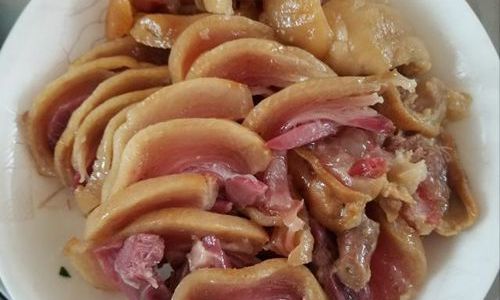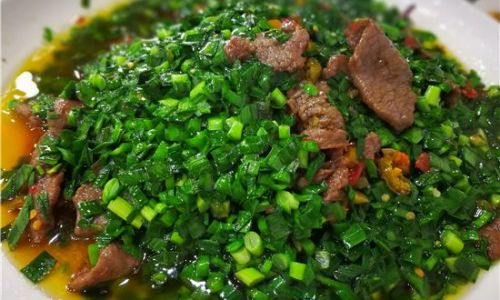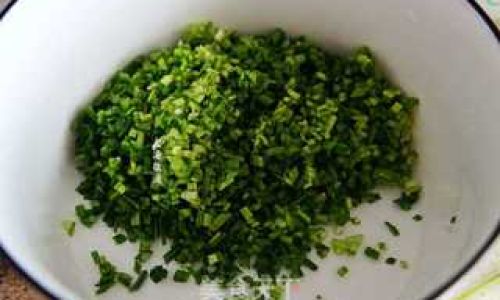Introduction
In the vast culinary landscape of China, where flavors and ingredients blend seamlessly to create dishes that tantalize the senses, one particular delicacy stands out for its rich history, unique taste, and meticulous preparation: Xuanwei Ham. This ham, named after the Yunnan province’s Xuanwei City, is a culinary gem that has been celebrated for centuries. Its reputation precedes it, with a flavor profile that is both complex and deeply satisfying. But how does one truly appreciate and enjoy Xuanwei Ham? This article delves into the intricacies of preparing and enjoying this gourmet treasure, offering insights into its history, production, and various culinary applications.

The History and Origin of Xuanwei Ham
The origins of Xuanwei Ham can be traced back over a thousand years, with historical records indicating its popularity during the Ming Dynasty. Its fame has only grown over time, reaching international acclaim. What sets Xuanwei Ham apart is the combination of factors that contribute to its unique flavor: the climate of Xuanwei, the breed of pigs used, the traditional salting and drying methods, and the aging process.
The climate of Xuanwei, with its cool winters and warm summers, provides the ideal environment for the ham to undergo its natural fermentation process. The pigs, typically black-haired breeds native to Yunnan, are fed a diet rich in corn, wheat, and soybeans, which adds to the ham’s distinct taste. The traditional production process involves meticulous salting, followed by hanging the hams in well-ventilated rooms to dry and ferment naturally. This aging process, which can last anywhere from one to three years, allows the fats to melt and redistribute, creating a tender texture and a flavor that is both savory and slightly sweet.
Types and Varieties of Xuanwei Ham
Within the realm of Xuanwei Ham, there are several types and varieties that cater to different tastes and preferences. The most common classification is based on the aging period:
-
One-Year-Old Ham: These hams are the youngest and have a milder flavor. They are ideal for those who prefer a less intense taste and are new to the world of Xuanwei Ham.
-
Two-Year-Old Ham: These hams offer a balance between flavor and texture. The fats have started to meld with the meat, creating a richer taste and a tender consistency.
-
Three-Year-Old Ham: These are the most sought-after hams. The extended aging process has allowed the fats to fully integrate with the meat, resulting in a flavor that is deep, complex, and incredibly satisfying.

In addition to the aging classification, Xuanwei Ham can also be categorized based on its shape and size. Some hams are whole, while others are sliced into smaller portions for easier consumption. Each type has its own unique charm and is suited for different culinary applications.
Preparing Xuanwei Ham: Tips and Techniques
Enjoying Xuanwei Ham is not just about slicing and serving. There are several tips and techniques that can enhance its flavor and texture, making each bite an unforgettable experience.
-
Slicing the Ham: The first step in preparing Xuanwei Ham is slicing it properly. A sharp knife is essential to ensure clean cuts that don’t tear the meat. It’s best to slice the ham thinly, as this allows the fats and flavors to distribute evenly in each bite.
-
Removing the Fat Cap: While the fats are an integral part of Xuanwei Ham’s flavor, some people prefer to remove the outer layer of fat before slicing. This can be done carefully to avoid wasting any of the ham’s precious meat.
-
Serving Temperature: Xuanwei Ham is best served at room temperature. This allows the fats to soften slightly, enhancing the overall texture and mouthfeel. If the ham is too cold, the fats can be hard and unpleasantly chewy.
-
Pairing with Ingredients: Xuanwei Ham pairs beautifully with a wide range of ingredients. Its rich, savory flavor complements fresh vegetables, fruits, cheeses, and grains. Experimenting with different combinations can lead to delightful discoveries and new favorite dishes.
Culinary Applications of Xuanwei Ham

Xuanwei Ham’s versatility makes it a staple in both traditional and modern cuisine. Here are some popular ways to enjoy this gourmet delicacy:
-
As a Standalone Dish: One of the simplest and most enjoyable ways to appreciate Xuanwei Ham is to serve it as a standalone dish. Thinly sliced and arranged on a plate, it can be enjoyed with a glass of fine wine or a cup of tea. The ham’s rich flavor and tender texture make it a perfect snack or appetizer.
-
In Salads: Xuanwei Ham adds a delightful depth of flavor to salads. Its savory taste pairs well with fresh greens, crunchy vegetables, and tangy dressings. Adding a few slices of ham to a garden salad or a pasta salad can elevate the dish to new heights.
-
In Sandwiches and Wraps: The ham’s tender texture and rich flavor make it an excellent filling for sandwiches and wraps. Whether it’s a classic ham and cheese sandwich or a more adventurous wrap with vegetables and spices, Xuanwei Ham adds a touch of sophistication to any lunch or dinner.
-
In Soups and Stews: The ham’s umami-rich broth, obtained by simmering the ham bone or scraps, is a valuable addition to soups and stews. This broth adds a layer of complexity and depth to dishes, making them more satisfying and flavorful.
-
In Stir-Fries and Fried Rice: Xuanwei Ham’s ability to hold its shape and flavor during cooking makes it a great addition to stir-fries and fried rice. Its savory taste complements the flavors of soy sauce, garlic, and ginger, creating dishes that are both hearty and delicious.
-
In Desserts: While it may seem unconventional, Xuanwei Ham can also be used in desserts. Its sweet-savory balance pairs well with fruits like pineapples and apples, creating unique and delightful sweet treats.
Preserving and Storing Xuanwei Ham

Proper preservation and storage are crucial to maintaining Xuanwei Ham’s quality and flavor. Here are some tips for keeping your ham fresh and delicious:
-
Unopened Packages: If the ham is still in its original packaging, it can be stored in a cool, dry place away from direct sunlight. Unopened packages can last for several months, depending on the expiration date.
-
Opened Packages: Once the packaging is opened, it’s best to transfer the ham to an airtight container or wrap it tightly in plastic wrap. This will prevent it from drying out and losing its flavor.
-
Refrigeration: For long-term storage, Xuanwei Ham can be refrigerated. Wrap it tightly in plastic wrap or place it in an airtight container before placing it in the fridge. Refrigerated ham can last for several weeks.
-
Freezing: If you plan to store the ham for an extended period, freezing is an option. Wrap it tightly in plastic wrap and then place it in a freezer-safe bag or container. Frozen ham can last for several months, but it’s best to consume it within six months for optimal flavor.
Conclusion
Xuanwei Ham is a culinary treasure that combines history, tradition, and flavor into one unforgettable experience. Its rich, savory taste and tender texture make it a versatile ingredient that can be enjoyed in a variety of ways. Whether you’re a seasoned chef or a culinary novice, there are countless ways to appreciate and enjoy this gourmet delicacy. By following the tips and techniques outlined in this article, you can unlock the full potential of Xuanwei Ham and create dishes that will delight your taste buds and impress your guests. So, the next time you’re in the mood for something special, reach for a slice of Xuanwei Ham and let its unique flavor take you on a culinary journey through the ages.






0 comments